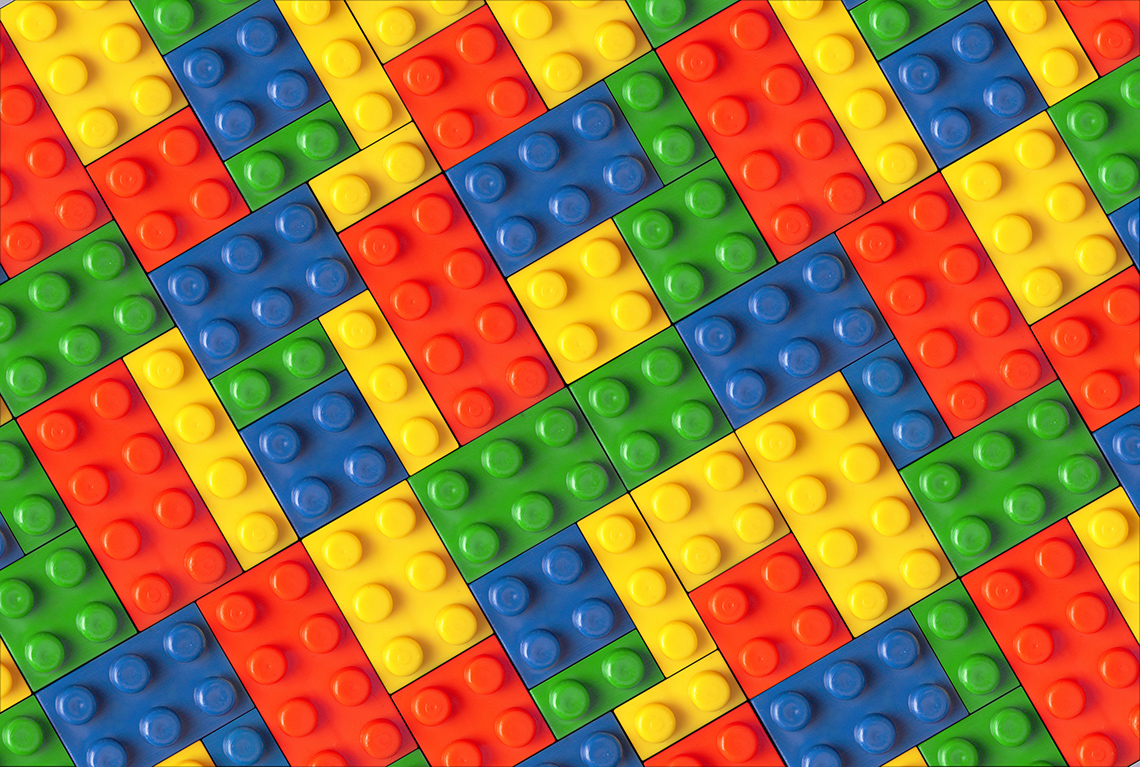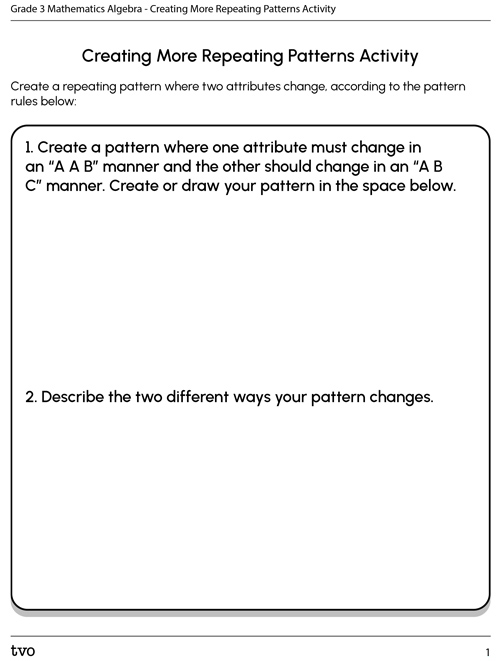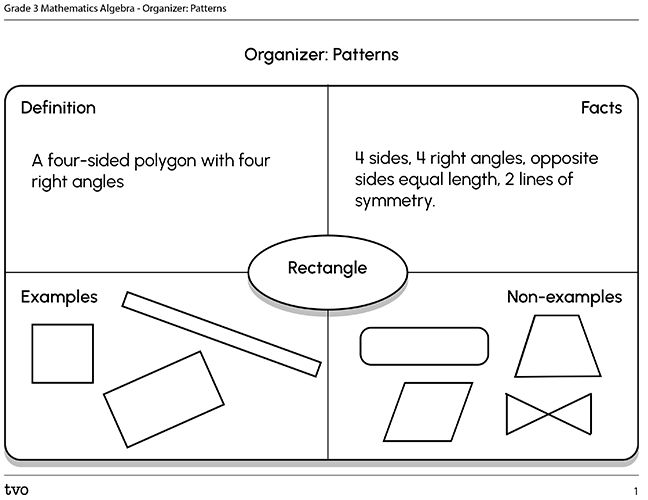Minds On
Identify patterns

Brainstorm
Look around you!
There are patterns all around us.
Identify patterns around your environment, like trees, leaves, buildings, stars, and etc.
Think about the following questions:
- Can you identify some patterns that are repeating?
- Think about different ways we can interpret the patterns.
- How could the patterns be described in more than one way?
Shapes and patterns
Part 1: Shapes
Explore the following pattern with triangles. What do you notice?

Student Tips
Did you know?
Did you notice the colours and sizes for the triangles?
In both cases, the patterns can be described as “A B A B” patterns.
Part 2: Objects
Explore the following houses. What pattern do you notice?

Press ‘Pattern’ to reveal the pattern description.
Explore the image above with the 5 identical houses.
In this case, the row houses have repeated patterns of doors and windows.
Starting from the left of the image, we have:
door, window, window, window, door, window, window, window…
The pattern can be translated or described as an “A B B B” pattern.Part 3: Numbers
Let's explore this set of numbers, which is also a pattern. What do you notice?
Press ‘Pattern’ to access pattern description.
PatternIn this set of numbers, the pattern is:
small 1, large 2, small 2, large 3, small 1, large 2, small 2, and a large 3.
In this case the numbers repeat 1, 2, 2, 3 and can be translated as A, B, B, C.
Or perhaps you noticed every other number was bigger?
Then, that pattern would be an A B pattern.Your turn!
- Create your own pattern with blocks, objects, images, colours, numbers, or shapes.
- Be sure it can be described in at least more than one way (shape, colour, texture, number, and position).
- Record your pattern and pattern descriptions.
Record your ideas in your notebook or another method of your choice.
Action
Observing patterns
The patterns you observed and created may have changed in multiple ways.
The patterns could have contained different textures, shapes, size, positions, or even the number of shapes per term may have changed.
Texture, shape, size, and positions are all examples of attributes.
Let's explore the following patterns!
Patterns can be described based on the shapes used.
For example in Pattern 1, there are 2 shapes, 1 shape, 3 shapes, 2 shapes, 1 shape, 3 shapes, 2 shapes, 1 shape, and 3 shapes.
This pattern is an example of an A B C pattern.
And in Pattern 2, there is: a trapezoid, triangle, trapezoid, trapezoid, triangle, trapezoid, trapezoid, triangle, and a trapezoid.
This pattern is an example of an A B A pattern.
Brainstorm
What do you think?
Reflect on the following questions:
- Is there another way that we can describe the pattern?
- How would you describe it?
Record your ideas in a notebook or a method of your choice.
Describing patterns
Task 1: Create a repeating pattern

It’s your turn to create a repeating pattern where two attributes change.
Student Tips
Attributes
Remember: attributes can be texture, shape, size, or positions.
1. One attribute must change in an “A B A” manner and the other should change in an “A B C” manner.
2. Describe the two different ways your pattern changes.
Complete the Create A Repeating Pattern in your notebook or use the following fillable and printable document.
Changing 2 attributes
Create a repeating pattern where two attributes change, according to the pattern rules:
1. Create a pattern where one attribute must change in an “A A B” manner and the other should change in an “A B C” manner.
2. Describe the two different ways your pattern changes.
3. Create another pattern where one attribute must change in an “A A B” manner and the other should change in an “A B A” manner.
4. Describe the two different ways your pattern changes.
Complete the Creating More Repeating Patterns Activity in your notebook or use the following fillable and printable document. You can also use another method of your choice.

Press the Activity button to access the Creating More Repeating Patterns Activity.
Activity(Opens in a new tab)Task 2: Extend the patterns
Complete the given patterns.
Select the correct answer, then press ‘Check Answer’ to see how you did.
Consolidation
Organize our thoughts

Frayer model organizer
We will use the Frayer Model Graphic Organizer to record our thoughts about what we have learned about patterns.
Be sure to include:
- a definition of a repeating pattern
- two to three facts about repeating patterns
- two to three examples of repeating patterns
- at least one example should have at least two attributes and written in letter form
- two to three non-examples of repeating patterns
Complete the Organizer: Patterns in your notebook or use the following fillable and printable document. You can also use another method of your choice.
Reflection
How do you feel about what you have learned in this activity? Which of the next four sentences best matches how you are feeling about your learning? Press the button that is beside this sentence.
I feel...
Now, record your ideas about your feelings using a voice recorder, speech-to-text, or writing tool.

